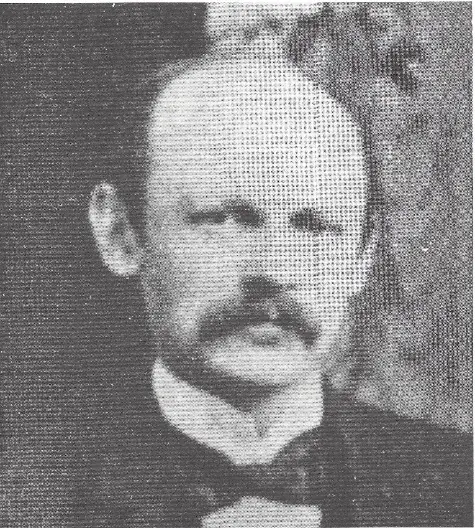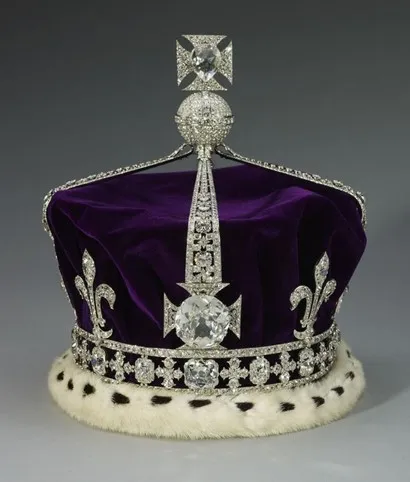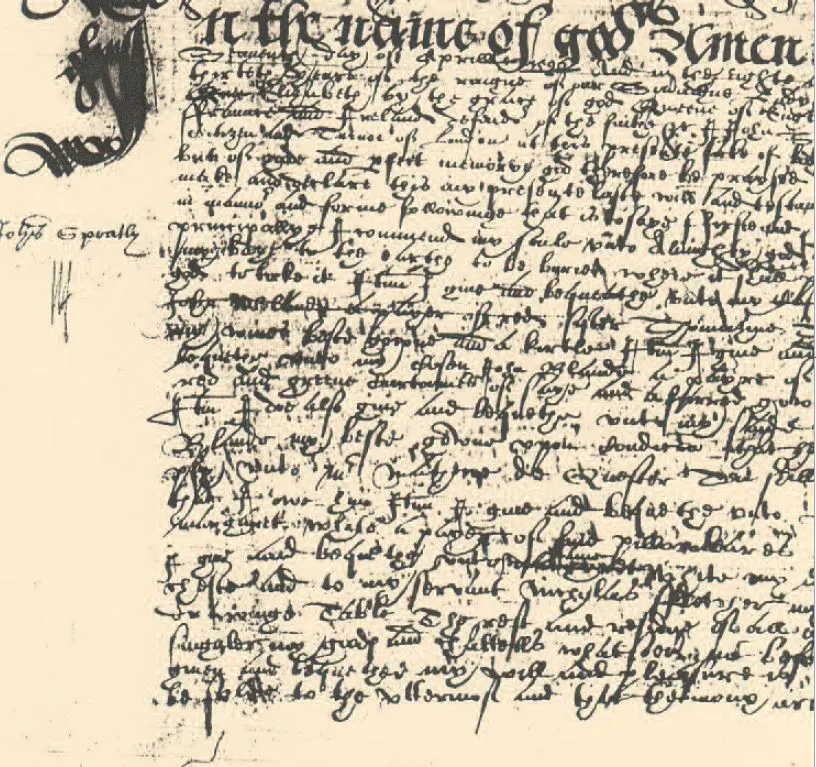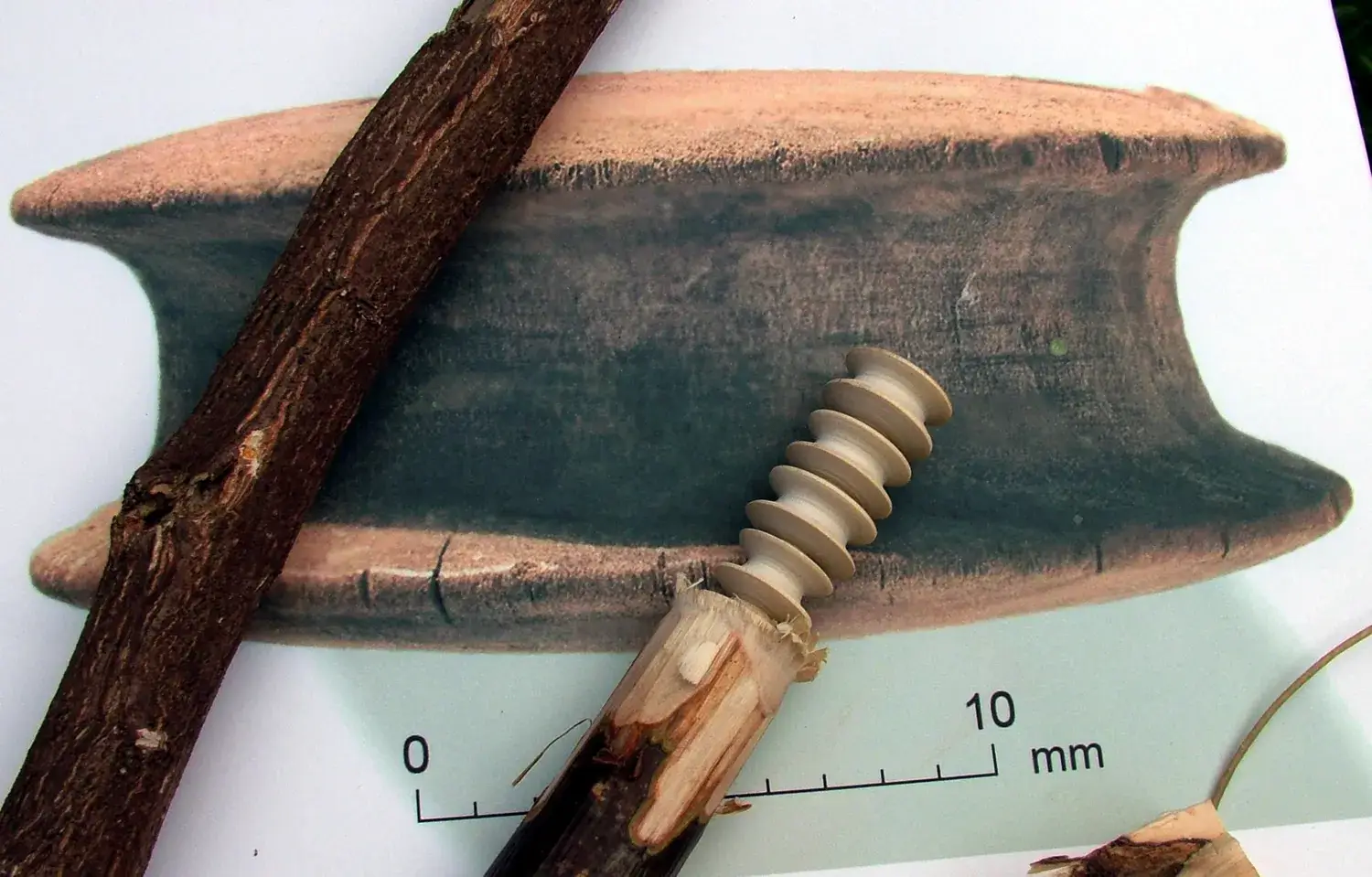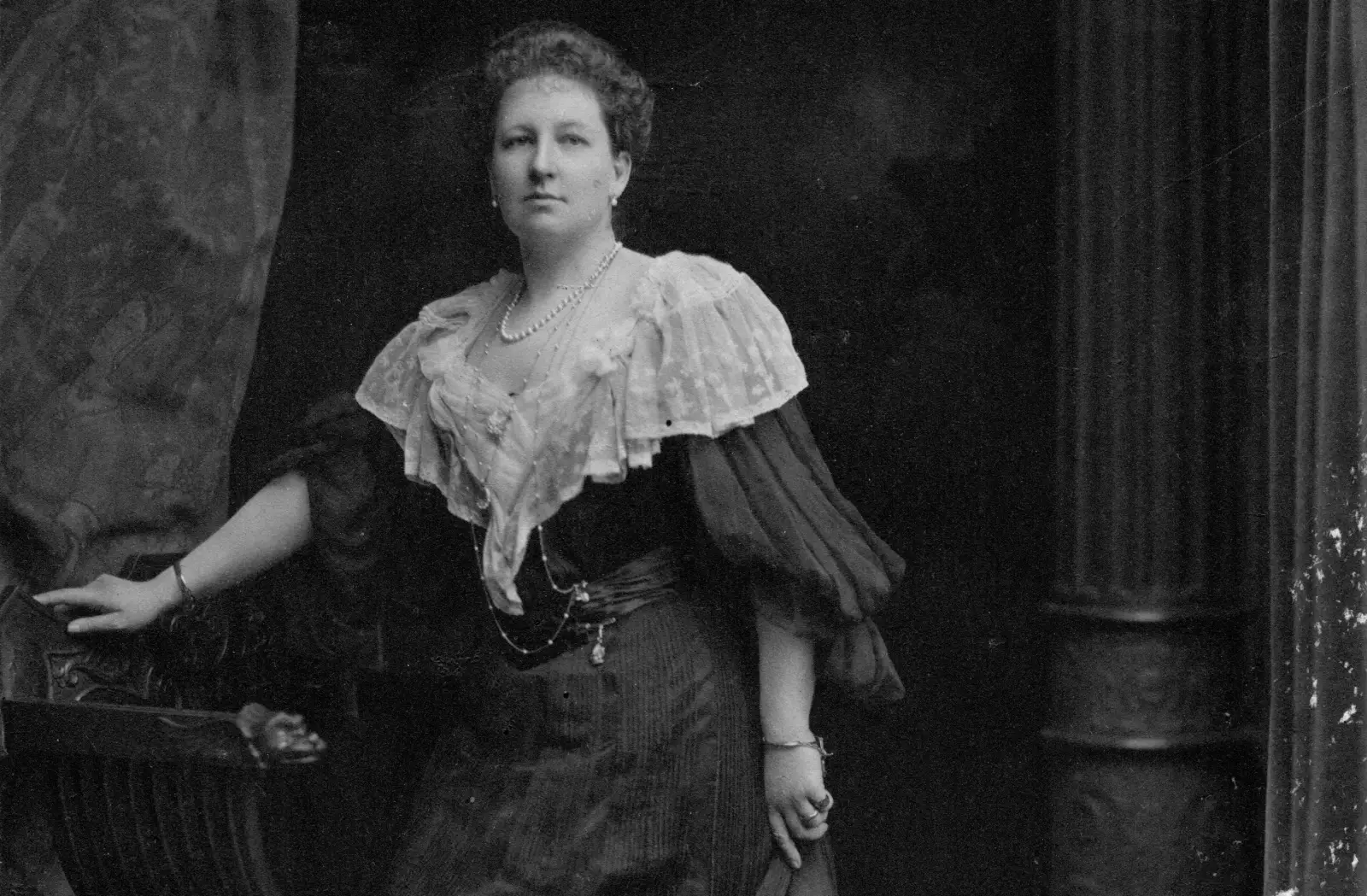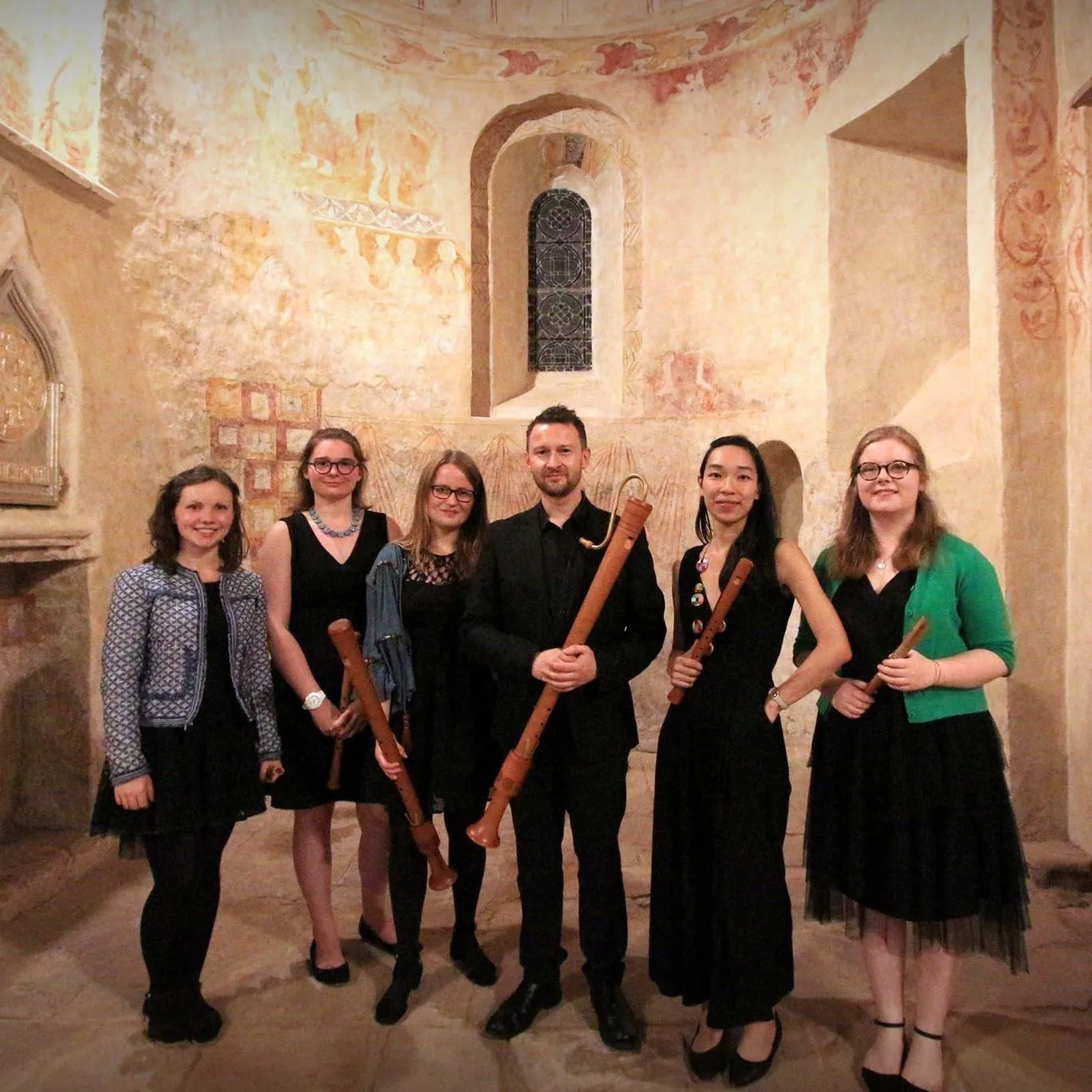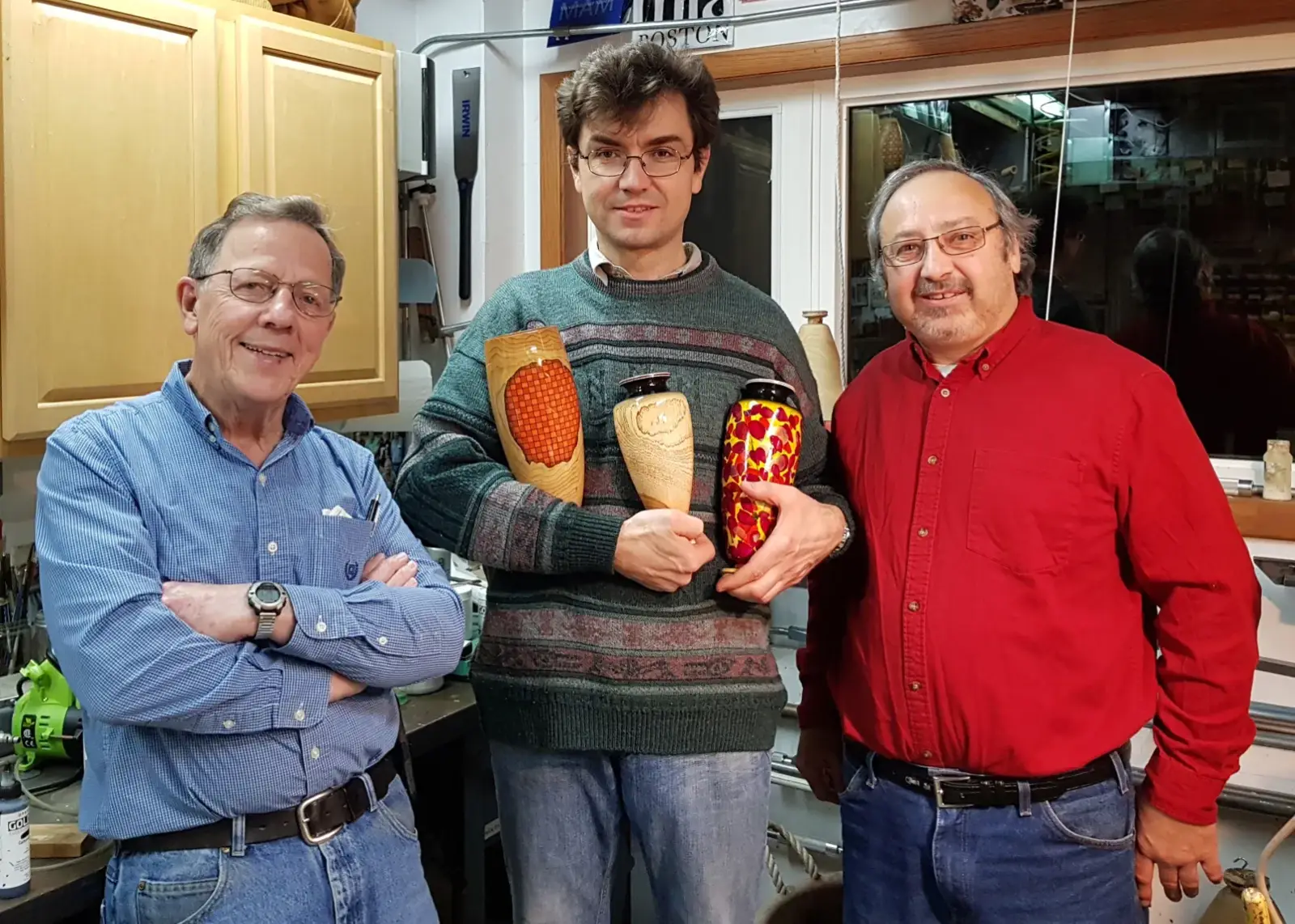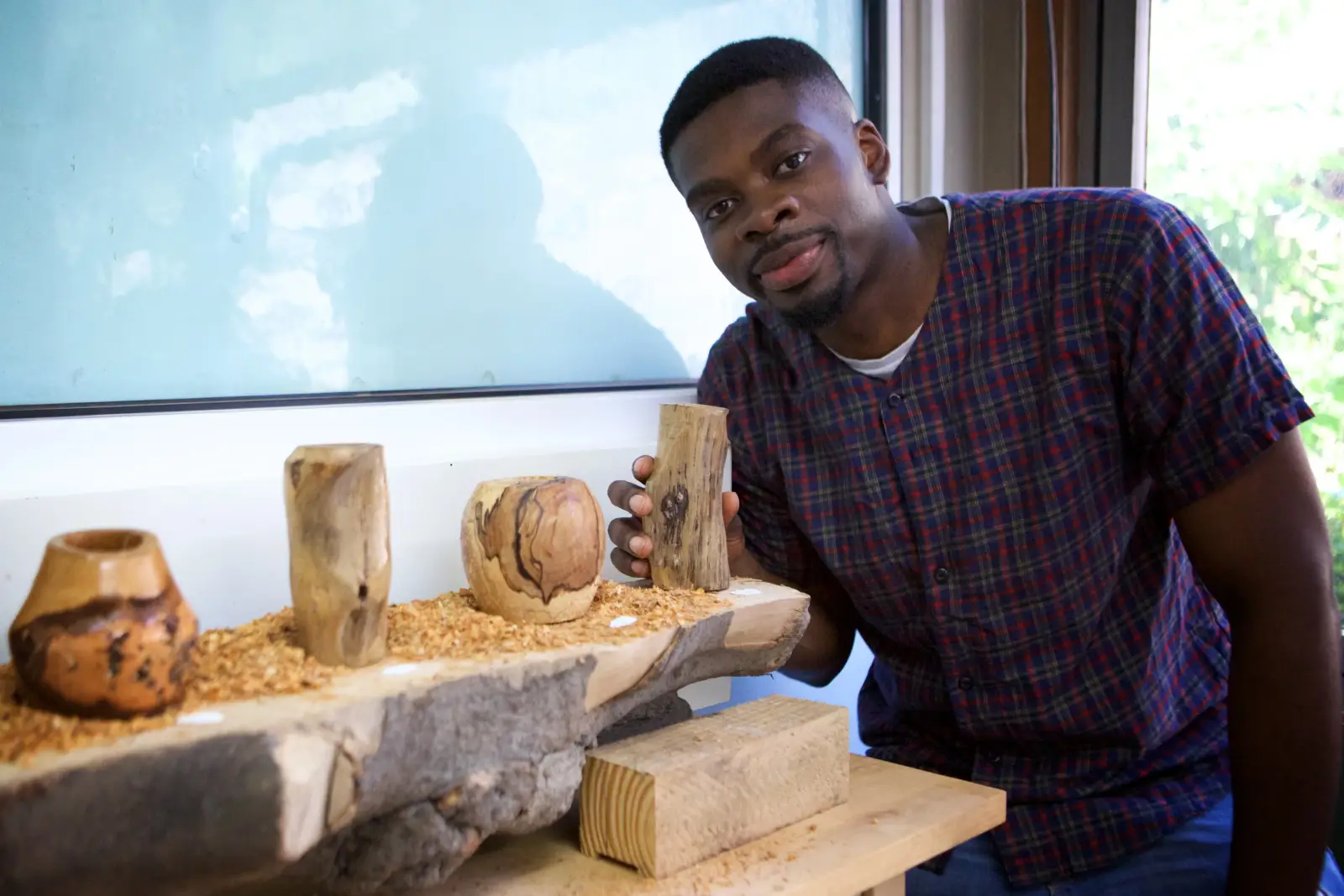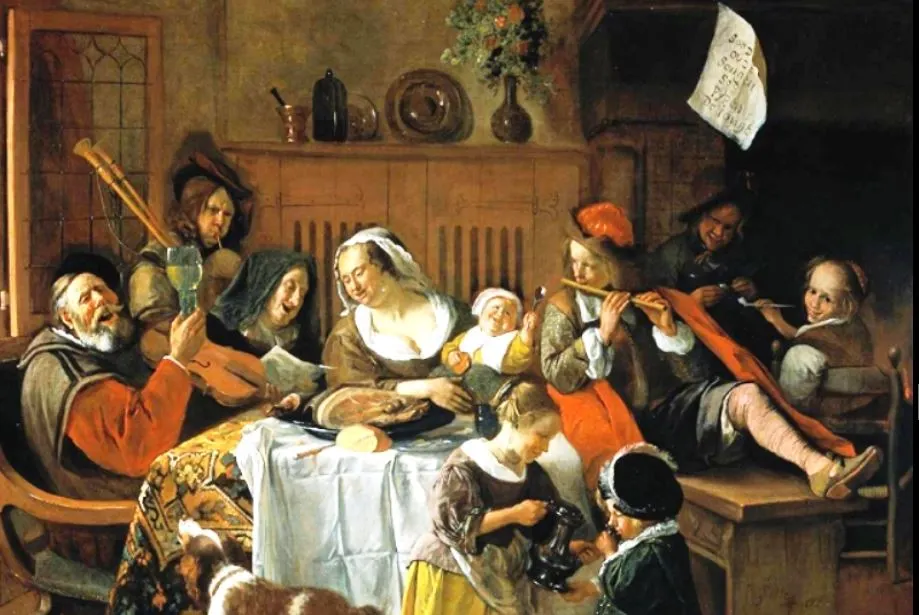Nigel Fleckney prepares ancient timber reclaimed from fens and other hardwoods for use as furniture. By Jonathan Foyle
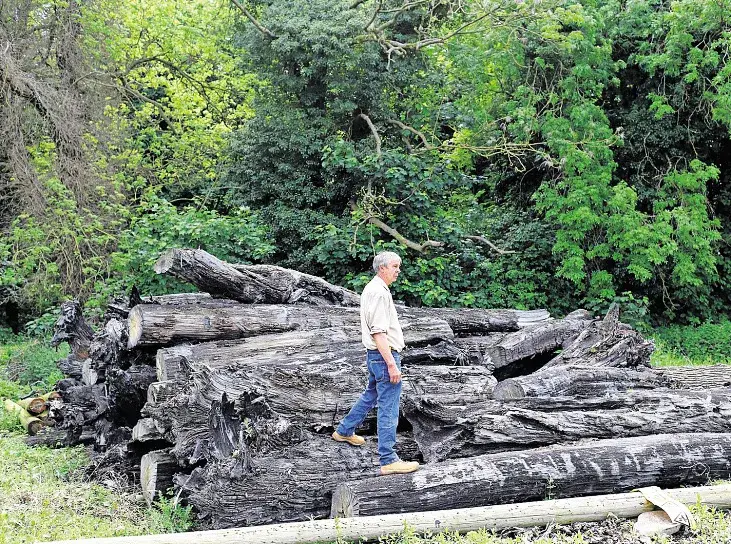
Northamptonshire is caricatured as the “county of spires and squires”, its Jurassic limestone yielding the optimal raw material for church steeples and stately piles that weather the centuries. About 70 miles north of London, its gently tumbling hills also support woodland, the corollary of England’s great ancestral estates. Geddington, just north of Northampton, is a honey-coloured medieval village with a triangular “Eleanor Cross” at its heart. It is one of a dozen stone monuments marking the processional route along which the body of Eleanor of Castile, queen to Edward I, was carried. In 1290 she died in Harby, Nottinghamshire, and was taken south to London’s Charing Cross, a journey lasting 12 days. Resting her corpse was the biggest thing to happen in this village. In later centuries it became surrounded by the landscaped park of Boughton House, whose artful arrangements of trees have matured over almost 300 years. Things take their time round here.
Nigel Fleckney was born in Geddington and has spent his entire career in the village as a woodsman, finding, preparing and dealing in the finest English hardwood. He also makes furniture
from it to order, but enjoys supplying it to “clever people” who transform his timber into beautiful objects. His workshop is part of the Boughton Estate, owned by Richard Scott, 10th Duke of Buccleuch, an exemplary custodian of land and heritage. I arrive at an array of old barns early one evening in the rain, under ebbing light. Fleckney’s hut is aglow with a wood fire, and he steps out to marshal my car. The last thing he would want is for me to clip the side of a shallow plastic pool filled from an oversailing drainpipe dripping water collected off the barn roof. I walk across the yard to peer over its edge and see a dozen or so thick black planks beneath the surface. They look like rough sawn ebony.
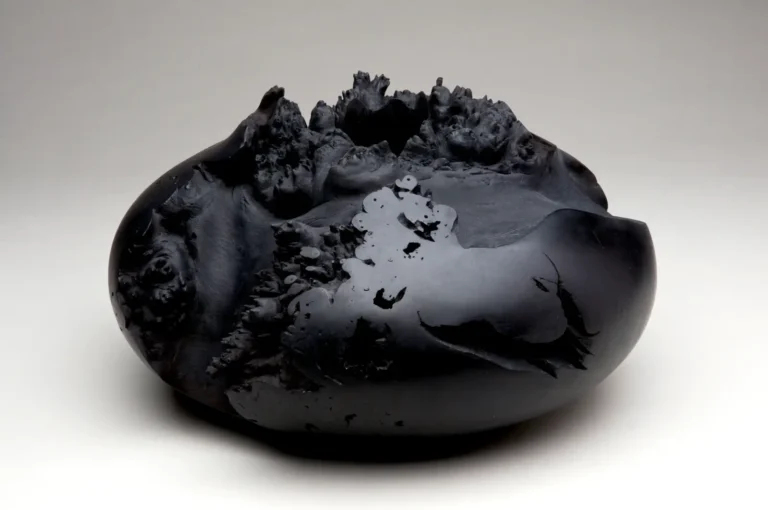
“It’s bog oak from the fens,” he explains. “It’s about 5,000 years old. The water level is falling there, so occasionally one comes up out of the ground and if I’m lucky, I’ll buy it.” Why does he leave it in a pool? “Well, I found that if you dry timber just as you receive it, it warps because there’s an uneven distribution of moisture. But if you soak it, the cells swell to their maximum size throughout then shrink evenly when you dry the boards in a kiln.” It is beguiling stuff, if not fossilised then hardened by the passage of time. “Americans love bog oak, for knife handles,” he says. I can see why — it’s a thrill to hold a block of once-living matter that grew under the sun that was being worshipped at Stonehenge.
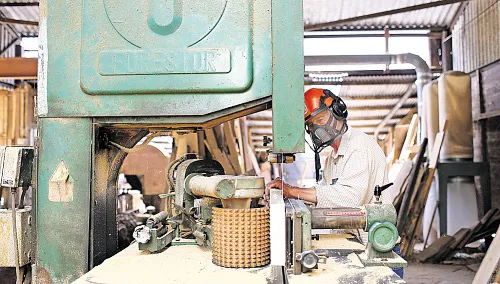
The main barn is ahead and the boards here are 7ft or 8ft tall and a couple of feet wide, some with truncated branches. Their pattern is like a warm Siena marble, with streaks, whorls and ripples. We are beholding burr elm. But didn’t elms succumb to Dutch elm disease 40 years ago?
“There are pockets of survivors,” he says, not wanting to give away too much about where they might be. This elm is from Huntingdonshire. Every now and again one comes down in a storm, or falls from age, and he might bid for it. This one is about 250 years old. He gestures around the barn. “These boards — about 20 — are all from one tree.” The downside of elm is that it is both apt to warp and delicious to woodworm. This tree is a once-in-a lifetime find: the first he has ever seen to have no evidence of worm, and perfect grain. A pair of big planks that he has kiln dried will cost more than £1,000. But they would make a heck of a table, and Fleckney can oblige.
Other boards around us include beech spalted with red and black streaks, or in contrasting sections that nature outlined in black, as if with a fine marker pen. When planed, sanded and polished the colour and contrast will glow, a work of abstract art 200 years in the making.
As we enter the adjacent barn, Fleckney flicks a switch and a terrifying roar of flame shoots from a cylinder on steel legs. It could be a jet engine. “Is this your drying chamber?” I shout, happy to flee. “No!” he says. “That’s just my heater. The kiln is through here . . . ” Planks are baked for a week or so until their moisture level reduces so far as to stabilise the wood, ready for a furniture maker to cut and prepare them. By the kiln’s entrance is a table Fleckney made from yew. He enjoys working with the jigsaw in his hut and tools in the workshop, and offers customised cutting boards and veneers. Yet his prime interest and clear pride lie in providing beautiful native specimens to other artisans.

One such maker is Luke Hope, of Hope in the Woods, a carver of sculptural, attenuated wooden spoons, the elegant simplicity of which depend on woods of exceptional quality. He came across Fleckney’s timber while looking for a supply of dark walnut, and — like me — was astonished at the bog oak. Making 20 to 30 pieces a week, Hope starts with a bandsaw for the essential shape, then turns to chisels and knives. The character of timber affects his oneman production line. The bog oak is, as you might expect, tough to work. “The tannins react with the peat to give it that colour, but because of that process of preservation, the grain is uneven, inconsistent. Parts are heavy and hard to work and you get more wastage,” he says. Yet the hardest timber to carve with a knife, he finds, is Fleckney’s bright blond sycamore. We’re all used to wooden spoons that develop a rope-like texture when the surface fibres tuft. With Hope’s spoons, the finish he achieves with rubbing and soaking, then sanding the fibres before oiling, ensures the beauty of the wood remains.
For centuries exotic furniture woods such as mahogany and rosewood have been shipped around the world to satisfy the taste for rich colour. Yet the range of stunning specimens Fleckney offers, including yew, plain and rippled sycamore, burred elm and chestnut, could convert anyone. They look so delicious you could eat them with a spoon.
Reproduced with kind permission of the FT Weekend and Nigel Fleckney.
Eleanor Lakelin is an award winner of the Worshipful Company of Turners Cockpit Arts award. She is based at Cockpit Arts, and has an online gallery.

